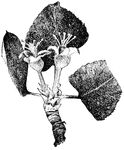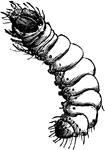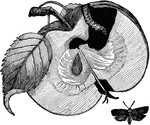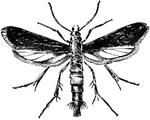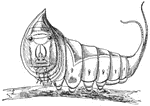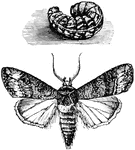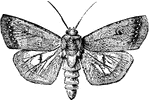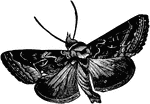
Acorn-moth
"a, larva within acron; b, acorn infested with the larva; c, head and thoracic segments of larva; d,…
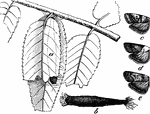
Acrobasis
"a, leaflets attacked by a larva of A. juglandis; b, case of larva; c, wings of A. nebulo; d, wings…
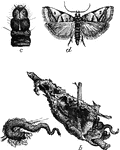
Acrobasis
"a, case containing caterpillar; b, cases in winter; c, head and thoracic joints of larva, enlarged;…
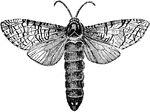
Bombycina
"Nocturnal moths, with the organs of the mouth in many cases so atrophied as to be unfit for use. These…

Bombycina
"Nocturnal moths, with the organs of the mouth in many cases so atrophied as to be unfit for use. These…

Bombycina
"Nocturnal moths, with the organs of the mouth in many cases so atrophied as to be unfit for use. These…

Bombycina
"Nocturnal moths, with the organs of the mouth in many cases so atrophied as to be unfit for use. These…
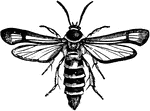
Blackberry Borer Female
A black, very little marked with yellow, and the only satisfactory remedy is cutting out and destroying…
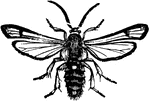
Blackberry Borer Male
A black, very little marked with yellow, and the only satisfactory remedy is cutting out and destroying…

Brown-Tail Moth
Brown-Tail Moth is the common name of liparis chrysorhaea. The moth is pure white with a large tuft…

Caterpillar of the Brown-Tail Moth
The caterpillar of the brown-tail moth is black with warty tubercles. The caterpillar emits tufts of…

Emporer Moth Caterpillar
Platysamia cecropia. The caterpillar occurring on a great variety of plants, including many of our fruit-trees…

Io Moth Caterpillar
An illustration of a Io moth caterpillar. The io moth (Automeris io) is a very colorful North American…
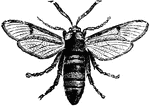
Clear Wing Moth
When clear wing moths are larvae they live in burrows, in the roots and stems of many plants, and often…

Codlin Moth
The codlin moth belongs to the tortricina, or leaf roller moths. The moths are very small.

Cordycep
The Sphaeria Robertsii a cordycep, a parasitic fungus "growing from the caterpillar of a New Zealand…
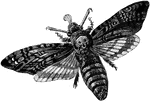
Death's Head Moth
Death's head moth feeds on potato, goji berry, and jasmine plants. These moths often have a straight…

Euchromia Ipomaeae
A moth that flies rather heavily and clumsily during the middle of the day in bright sunlight.

Female Gipsy Moth
The female gipsy moth is larger than the male. The wings are a dingy or yellowish white with darker…

Geometrina
"The Geometrina in the larval condition have only four prolegs, the usual number being ten, and in moving…

Geometrina
"The Geometrina in the larval condition have only four prolegs, the usual number being ten, and in moving…

